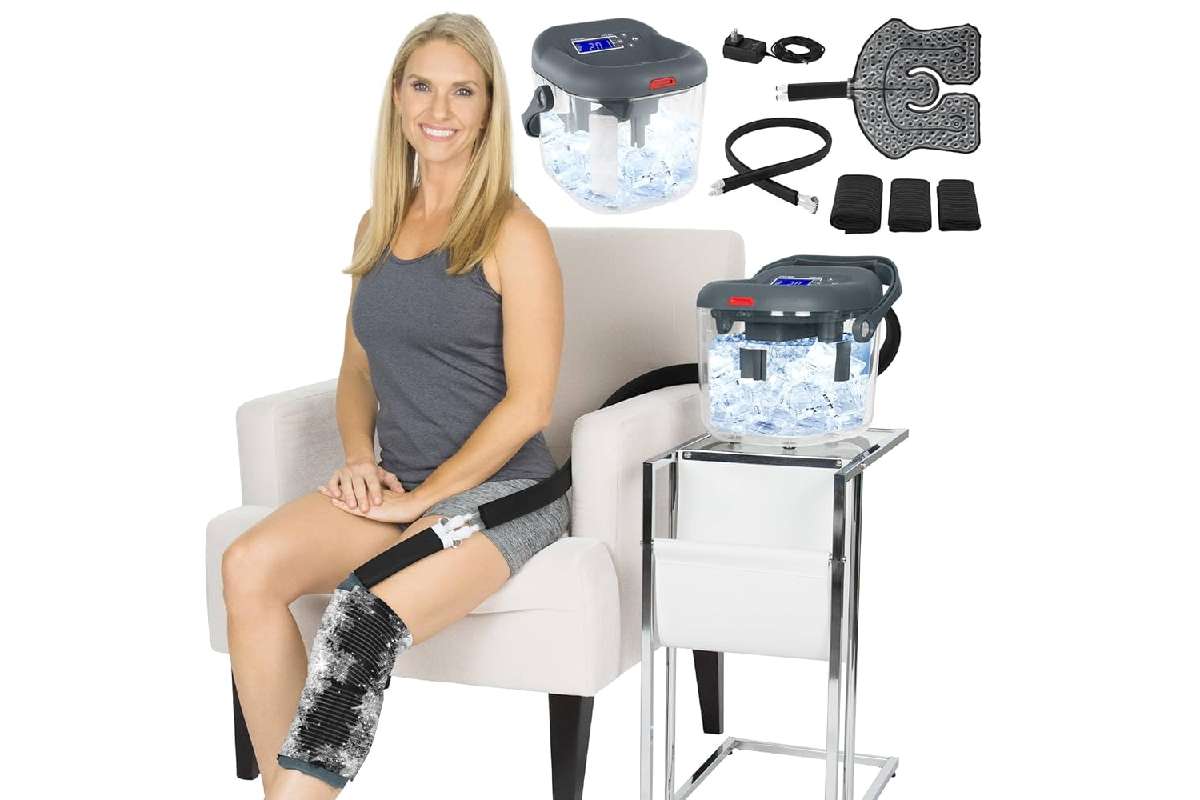Table of Contents
Ice packs are so last century!
You know the drill: twist an ankle, bang a knee, or wake up with a swollen joint, and someone shoves a bag of frozen peas at you. Sure, it works… kind of. But if you’ve ever tried to hold an ice pack in place for 20 minutes while it slowly turns into a wet, slippery mess, you’ve probably wondered if there’s a better way.
There is. It’s called a cold therapy system, and it’s basically the modern upgrade your recovery routine has been begging for.
So, What Exactly Is a Cold Therapy System?
Think of it as a high-efficiency ice delivery service for your body. Instead of balancing a frostbitten bag on the sore spot, this device circulates chilled water through a specially designed pad that straps securely over the area you want to treat.
The result? Steady, consistent cold—no shifting, no dripping, and no need to refreeze anything mid-session. Systems like the Breg Polar Care Kodiak have made this kind of therapy easy to use at home without the fuss of complicated medical equipment.
Why Cold Therapy Works
Cold therapy (also called cryotherapy) has been a go-to for decades because it tackles two big issues after injury or surgery: swelling and pain. When you apply cold to an area:
- Blood flow slows down, which helps limit inflammation.
- Nerve activity decreases, reducing pain signals to the brain.
- Muscle spasms calm, making it easier to rest and heal.
The beauty of a home system is that it keeps the temperature steady for as long as you need, rather than warming up after a few minutes.
The At-Home Advantage
Sure, you could get cold therapy at a clinic. But being able to do it from your couch—or bed—means you can start treatment right away and repeat it as often as needed. That’s a big deal in the first few days after an injury or surgery, when timely, consistent cold can make the biggest difference.
And because these systems are portable and quiet, you can multitask: watch a show, answer emails, or read a book while you recover.
Wellness clinics are now offering NAD IV therapy in Charlotte, which is known to support energy, cellular repair, and overall recovery—making it a great complement to treatments like a cold therapy system at home.
How to Use It (Without Overcomplicating Things)
Most home cold therapy systems work on the same basic principle:
- Fill the cooler with ice and water.
- Attach the therapy pad to the body part you’re treating.
- Connect the hose from the cooler to the pad.
- Turn it on and let the chilled water circulate.
Sessions typically last 20–40 minutes, but follow your healthcare provider’s recommendations—especially if you’ve had surgery or have certain medical conditions.
A Few Safety Pointers
Cold therapy is safe for most people, but a little common sense goes a long way:
- Don’t apply it directly to bare skin—use a thin barrier like a cloth or bandage to prevent frostbite.
- Stick to recommended time limits to avoid skin damage.
- Check the skin regularly for redness, numbness, or irritation.
- Consult a doctor if you have circulation issues, diabetes, or nerve damage before starting therapy.
Why It Beats the Bag of Peas
Let’s be honest: traditional ice packs are a hassle. They’re uneven, they sweat condensation all over your clothes, and they never stay cold long enough. A cold therapy system solves all of that with steady temperature control, targeted delivery, and hands-free convenience.
Plus, something about strapping on a sleek piece of recovery gear just feels more… intentional. You’re not just winging it; you’re giving your body a proper healing tool.
The Bottom Line
Whether you’re bouncing back from surgery, soothing a sports injury, or just dealing with stubborn joint pain, a home cold therapy system can make recovery a whole lot easier. Systems like the Breg Polar Care Kodiak offer the efficiency and consistency you just can’t get from the freezer aisle.
Because when you’re hurting, the last thing you want is a soggy bag of ice sliding off your knee.

